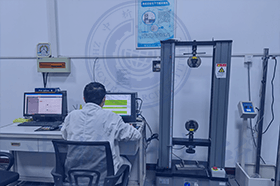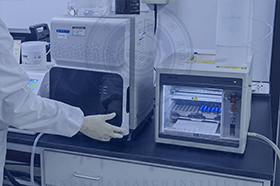檢測信息(部分)
檢測項目(部分)
- 材料成分分析:確認金屬基材的合金成分是否符合設計要求。
- 厚度偏差:測量板材厚度均勻性,確保結構強度。
- 涂層附著力:檢測表面涂層與基材的結合強度。
- 耐鹽霧性能:模擬潮濕環境下的抗腐蝕能力。
- 防火等級:驗證材料阻燃特性是否符合安全標準。
- 平整度偏差:檢驗安裝后的整體平面度。
- 承載能力:測試吊頂系統在負載下的變形極限。
- 尺寸穩定性:評估溫度變化下的形變系數。
- 光澤度:量化表面裝飾效果的光學參數。
- 色差檢測:確保批次間顏色一致性。
- 邊緣直線度:檢查板材切割精度。
- 接縫高度差:控制安裝后的視覺平整性。
- 抗風壓性能:驗證戶外用吊頂的結構安全性。
- 隔音系數:測量聲學功能型產品的降噪能力。
- 耐污染性:測試表面抗污漬附著特性。
- 環保指標:檢測重金屬等有害物質釋放量。
- 抗震性能:模擬地震工況下的結構完整性。
- 導電連續性:驗證防靜電型產品的性能達標性。
- 熱膨脹系數:計算溫度變化引起的尺寸變化率。
檢測范圍(部分)
- 鋁合金條形吊頂
- 鍍鋅鋼板方格吊頂
- 不銹鋼蜂窩板吊頂
- 銅質裝飾吊頂
- 鈦鋅合金屋面系統
- 陽極氧化鋁板吊頂
- 烤漆金屬扣板吊頂
- 穿孔吸音金屬吊頂
- 仿古做舊金屬吊頂
- 立體造型藝術吊頂
- 防輻射專用吊頂
- 抗菌涂層醫療吊頂
- 戶外耐候型金屬吊頂
- 防靜電機房吊頂
- 模塊化快裝吊頂系統
- 鏤空雕刻裝飾吊頂
- 雙曲面異形金屬吊頂
- 集成照明功能吊頂
- 防火A級認證吊頂
- 太陽能反射節能吊頂
檢測儀器(部分)
- 萬能材料試驗機
- 涂層測厚儀
- 鹽霧試驗箱
- 分光光度計
- 燃燒性能測試儀
- 三維激光掃描儀
- 聲學混響室
- 原子吸收光譜儀
- 電子顯微鏡
- 熱重分析儀
檢測標準(部分)
1.1 This practice covers the installation of suspension systems for acoustical tile and lay-in panels. It is applicable to contractors whose services are utilized for installing acoustical ceilings and to other trades if their activities are responsible for interference with ceiling components or performance as defined in this recommended practice.
1.2 While the practices described in this document have equal application to fire-resistive suspension systems many systems impose additional requirements to obtain the fire endurance classification of particular floor-ceiling or roof-ceiling assemblies. These details are available from the listing agency and from the manufacturers.
1.3 Similarly additional detailing is often necessary to meet sound attenuation requirements when ceiling plenums extend over contiguous rooms. Obtain these from the manufacturer of the acoustical material employed.
1.4 The values stated in either SI units or inch-pound units are to be regarded separately as standard. The values stated in each system are not exact equivalents; therefore each system shall be used independently of the other. Combining values from the two systems result in non-conformance with the standard.
1.5 While many of the practices described in this practice have application to the installation of metal suspension systems in exterior environments the specific design of exterior ceiling installations requires the review and approval of the architect or engineer or both
1.1 This practice covers the installation of suspension systems for acoustical tile and lay-in panels. It is applicable to contractors whose services are utilized for installing acoustical ceilings and to other trades if their activities are responsible for interference with ceiling components or performance as defined in this recommended practice.
1.2 While the practices described in this document have equal application to rated fire-resistive suspension systems additional requirements may have been imposed to obtain the fire endurance classification of particular floor-ceiling or roof-ceiling assemblies. These details should be obtained from the manufacturers.
1.3 Similarly additional detailing may be necessary to meet sound attenuation requirements when ceiling plenums extend over contiguous rooms. These too should be obtained from the manufacturer of the acoustical material employed.
1.4 The values stated in either SI units or inch-pound units are to be regarded separately as standard. The values stated in each system may not be exact equivalents; therefore each system shall be used independently of the other. Combining values from the two systems may result in non-conformance with the standard.
1.5 While many of the practices described in this practice have application to the installation of metal suspension systems in exterior environments the specific design of exterior ceiling installations requires the review and approval of the architect or engineer or both who are responsible for the construction of the building or modifications to an existing building. While recommendations from the manufacturer should be solicited it remains the final responsibility of the architect/engineer to ensure proper application of the materials in question.
1.6 This standard does not purport to address of the safety concerns if any associated with its use. It is the responsibility of the user of this standard to establish appropriate safety and health practices and determine the applicability of regulatory limitations prior to use.
本標準適用于民用建筑工程室內裝飾裝修材料選擇的評價。
本文件適用于金屬材料室溫拉伸性能的測定。
注:附錄C給出了計算機控制試驗機的補充建議。
本部分適用于溫度在-196C~<10℃范圍內金屬材料拉伸性能的測定。
本部分適用于金屬材料液氮溫度拉伸性能的測定.也可適用于需要特殊設備、較小試樣以及涉及鋸齒形屈服、絕熱增溫和應變速率影響的低溫(溫度小于-196℃或77K)拉伸試驗。
注:3He同位素的沸點為3.2K,一般情況下,液氦試驗是在4He或含高濃度4He的3He和4He的混合物中進行的。
因此試驗溫度指定為4K。
直接檢驗法適用于檢測與硬度計功能相關的主要參數是否在規定的允差以內,例如試驗力、深度測量、試驗循環時間。間接檢驗法適用于使用一組經過標定的標準硬度塊判定硬度計在測量已知硬度材料時的能。
間接檢驗法可單獨用于使用中硬度計的定期常規檢查。
如果硬度計還可用于其他硬度試驗方法的硬度試驗,需分別按照每一種方法單獨對硬度計進行檢驗。
本文件適用于固定式硬度計和便攜式硬度計。
注意已將碳化鎢合金球壓頭視為洛氏硬度標準型的球壓頭。鋼球壓頭僅限于在符合GB/T230.1-2018附錄A的條件下使用。
值得注意的是,碳化鎢合金球壓頭被視為標準型洛氏硬度壓頭。僅在滿足GB/T230.1-2018附錄A要求的情況下方可使用鋼球壓頭。
本文件適用于洛氏硬度標準硬度塊的標定。
直接檢驗包括檢查被檢硬度計性能參數是否處于規定的限值以內,而間接檢驗則是使用按GB/T231.3標定的標準硬度塊進行硬度測量來檢查硬度計的綜合性能。
如果硬度計還用于其他方法的硬度試驗,則需分別按每一種方法單獨對硬度計進行檢驗。
本文件適用于固定安裝的硬度計和便攜式硬度計。對于不能符合按規定的力/時間配置的硬度計,附錄B給出了對硬度計的力和試驗循環時間進行改進的直接檢驗程序。
本文件適用于標準布氏硬度塊(以下簡稱“標準塊”)的標定。

檢測資質(部分)










檢測優勢
檢測實驗室(部分)





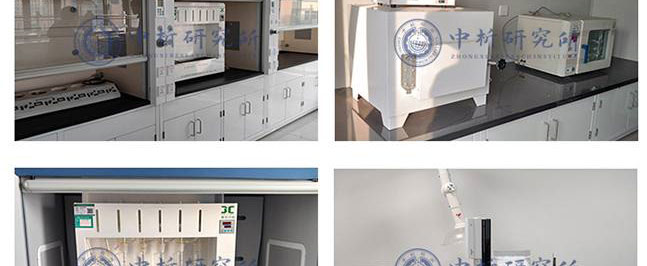
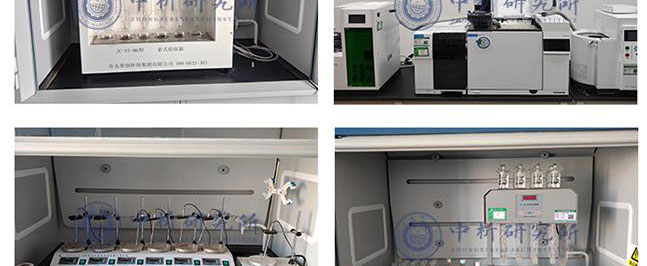
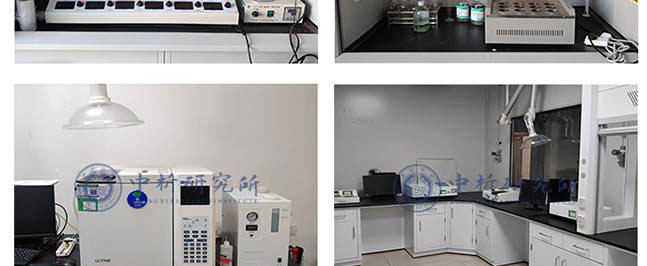
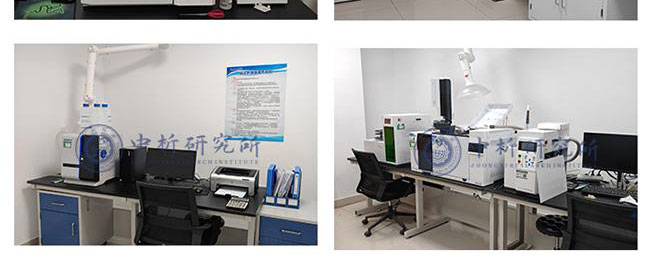
合作客戶(部分)





檢測報告作用
1、可以幫助生產商識別產品的潛在問題或缺陷,并及時改進生產工藝,保障產品的品質和安全性。
2、可以為生產商提供科學的數據,證明其產品符合國際、國家和地區相關標準和規定,從而增強產品的市場競爭力。
3、可以評估產品的質量和安全性,確保產品能夠達到預期效果,同時減少潛在的健康和安全風險。
4、可以幫助生產商構建品牌形象,提高品牌信譽度,并促進產品的銷售和市場推廣。
5、可以確定性能和特性以及元素,例如力學性能、化學性質、物理性能、熱學性能等,從而為產品設計、制造和使用提供參考。
6、可以評估產品是否含有有毒有害成分,以及是否符合環保要求,從而保障產品的安全性。
檢測流程
1、中析研究所接受客戶委托,為客戶提供檢測服務
2、客戶可選擇寄送樣品或由我們的工程師進行采樣,以確保樣品的準確性和可靠性。
3、我們的工程師會對樣品進行初步評估,并提供報價,以便客戶了解檢測成本。
4、雙方將就檢測項目進行詳細溝通,并簽署保密協議,以保證客戶信息的保密性。在此基礎上,我們將進行測試試驗.
5、在檢測過程中,我們將與客戶進行密切溝通,以便隨時調整測試方案,確保測試進度。
6、試驗測試通常在7-15個工作日內完成,具體時間根據樣品的類型和數量而定。
7、出具檢測樣品報告,以便客戶了解測試結果和檢測數據,為客戶提供有力的支持和幫助。
以上為金屬吊頂檢測的檢測內容,如需更多內容以及服務請聯系在線工程師。






